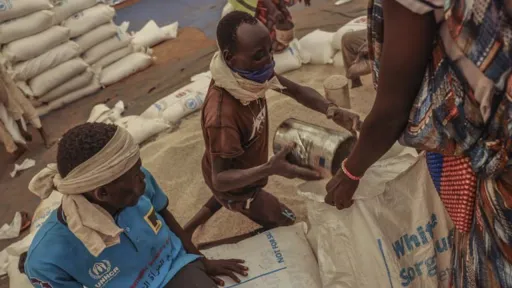By Sylvia Chebet
"Yes! We can end TB!" isn't just another slogan. The theme for this year's World Tuberculosis Day, commemorated on March 24, reflects the scientific developments in the prevention and treatment of TB that have helped Africa get a grip on this highly infectious disease.
A latest clinical study conducted in Cape Town, South Africa, reveals that the most potent HIV drug works well with one of the best preventive TB treatments.
Generally speaking, tuberculosis preventive treatment or TPT consists of a course of one or more anti-tuberculosis medicines given with the intention of preventing the development of TB disease, the World Health Organization explains.
Experts involved in the latest study have discovered that a short course of preventive TB therapy, administered once every seven days for 12 weeks, has the potential to improve lives and prevent deaths.
Dr Ethel Weld, an assistant professor of medicine at Johns Hopkins University School of Medicine in the US and the study's principal investigator, says available evidence proves the combination is "safe and well-tolerated."
This, the clinical trialist adds, reassures clinicians about starting TB preventive therapy early in people at high risk of TB disease.
“We know that there are almost 200,000 deaths that are TB related in people with HIV every year. A very sad and tragic truth about that is that each of those deaths is preventable,” she says.
"In effect, the combination treatment has the potential to prevent TB cases and also all of the consequences of TB cases, which include not only death but also terrible consequences for families and loved ones. There are also disability and catastrophic economic and social burdens to contend with," says Dr Weld.
These new results are particularly significant for sub-Saharan Africa, which has a high burden of the two diseases.
Globally, TB causes 1.3 million deaths each year and affects millions more, with enormous social and economic impacts on families.
For a patient, the burden of battling the two life-threatening conditions that compound each other — is immense.
With both requiring strong medications that often leave patients drained, Dr Weld says it was crucial to find a short-course therapy that could knock off TB early on.
"When they are most vulnerable, medication has to be tolerable so that patients stand a chance of completing the therapy," she points out.
Stringent therapy cycle
For the combination treatment to be effective, it should be administered soon after diagnosis, Dr Weld explains.
The TB germ is almost everywhere, but people with strong immunity are spared illness. It stays inactive or latent in others, developing into full-blown TB when their immunity gets compromised, experts say.
"We have to remember that if we could get rid of the latent TB infection, stamp it out when it's just an ember and not yet a forest fire, then we could avoid TB disease. Also, every one of those deaths from TB," says Dr Weld.
Experts have advocated adopting this approach in every country where TB is prevalent.
"The only way we will end TB is if we systematically prevent new cases. We now have the recipe to do so," Gavin Churchyard, CEO of the Johannesburg-based healthcare organisation Aurum Institute, tells TRT Afrika.
Dr Weld couldn't agree more. "An ounce of prevention is worth a pound of cure, and whenever possible, it's best to get that ounce in early," she says.
WHO's global mandate
The World Health Organisation (WHO) has been spreading awareness about how science has made it possible to rein in TB with predictive success.
"Today, we have the knowledge, tools and political commitment to end this millennia-old disease that remains one of the world's top infectious killers," says WHO's director-general Dr Tedros Adhanom Ghebreyesus.
However, the scale-up of access to TB preventive treatment has been slow.
According to WHO, progress in developing new TB diagnostics, drugs and vaccines is still constrained by inadequate investment in these areas.
This is despite evidence showing that modest investments could lead to significant health and economic benefits in different countries, with a return on investment of up to US $39 on every dollar invested.
Call for concerted action
Preventing infection and stopping the progression from infection to disease is critical for reducing TB incidence and ending the killer disease.
To do this, it is essential to offer TB preventive treatment to high-risk people.
"Part of the reason TB carries such stigma is that once you have the disease, you can spread it to your loved ones," explains Dr Weld.
"But now, the new combo treatment offers a tool for patients to protect their families, especially senior citizens at home. It's empowering to know that I have this tool."
Dr Tereza Kasaeva, director of WHO's Global Tuberculosis Programme, says the organisation would continue to provide global leadership in fighting TB.
"WHO will work with all stakeholders until we reach and save every person, family and community impacted by this deadly disease."
➤ Click here to follow our WhatsApp channel for more stories.
























